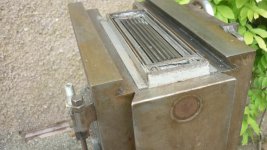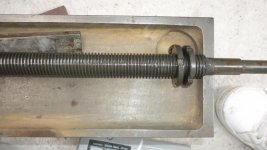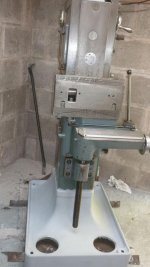bob531
Aluminum
- Joined
- May 9, 2015
- Location
- U.K Cumbria
Hi , Im new here, im in the north of England and the new owner of an Alexander master toolmaker.
Im busy removing parts to reduce the weight for to move it into my workshop.
Does anyone know how to remove the horizontal spindle housing from the top of the column?
Ive been following the Deckel instructions ,ive removed everything i can see which is in the way and have got to the part where it says tilt it to the right to clear the gear underneath and lift off (or is it slide it off ?). It just wont move !
Any help would be great!
Thanks Bob
Im busy removing parts to reduce the weight for to move it into my workshop.
Does anyone know how to remove the horizontal spindle housing from the top of the column?
Ive been following the Deckel instructions ,ive removed everything i can see which is in the way and have got to the part where it says tilt it to the right to clear the gear underneath and lift off (or is it slide it off ?). It just wont move !
Any help would be great!
Thanks Bob















